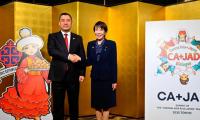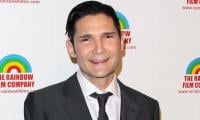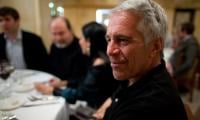The growth of far-right politics in the Western world is not new. it had seen its true colours during the days of Hitler and Mussolini with an equally ferocious reflection across the Atlantic in the form of the Ku Klux Klan. The pinnacle of Nazism took the world through World War II resulting in the death of millions of people and widespread devastation.
Post World War II, Nazism went into a deep slumber for more than half a century. However, Europe and North America have witnessed its steady rise in the 21st century, hidden behind the facade of the far right. As liberal democrats and socialists give way to right-wing parties, Nazism seems to be raising its head steadily but surely.
With the influx of almost one million refugees from North Africa and the Middle East into European lands, right-wing politics is getting a fillip and enhanced momentum not only in Europe but also in the US. Donald Trump, in particular, is having a field day in the Republican primaries.
Up to thirty percent of the population in Western countries comprises non-white immigrants and their children. The recent tsunami of immigrants pouring across the Mediterranean sea has further accentuated this imbalance and it may be a fair projection that the non-white population of Europe will cross the threshold of 50 percent of the total population within next three decades. Eurabia may become a reality sooner than we initially thought. As the white youth sees an influx of immigrants from Asia and Africa, they develop a sense of anxiety, giving fillip to right-wing politics.
In the last two decades, Western economies have seen difficult times with jobs and social welfare being impacted negatively. The infrastructure of the Western world needs young people to keep it afloat especially in the services sector. The Western world does not have as many young people as it requires for its economy, and it cannot sustain growth without the immigration of youth from Asia and Africa. This creates a Catch-22 situation where even when the net import of human resources may be economically desirable, political factors, especially pressure from the far right would make it politically untenable. Politics in the EU and the economic arrangement of the Eurozone have failed to convince the white voter about the economic feasibility of having immigrants.
Feeling strategically disenfranchised and suffocated in the heart of Europe, several segments of the white population saw another New Deal as an unviable option. Unfortunately, the only alternative is to rally under the flag of the right-wing, meaning Nazism.
The surge of Islamophobia in European politics has badly marred the political landscape of free Europe. Islamophobia is becoming fashionable in right-wing groups and Nazism, with leaders calling for outright bans on anything Islamic.
Right-wing parties across Europe have gradually gained ground because of the drivers mentioned earlier. One example is the spectacular rise of Marine Le Pen and her party the National Front in France. In 2014 with 4,712,461 votes, the National Front captured 24 of France’s 74 seats in the European parliament election, finishing first with 24.86 percent of the vote. This year the National Front went on to win the first round of the regional elections on December 6, winning six of the thirteen newly redrawn regions and emerging ahead of both major establishment parties overall.
In the Netherlands, Geert Wilders the founder and leader of the Partij voor de Vrijheid or the Party for Freedom, has attracted a large following by denouncing Muslim immigration and calling for bans on the Quran. In a speech before the Dutch Parliament, he stated, “Islam is the Trojan horse in Europe. If we do not stop Islamification now, Eurabia and Netherabia will just be a matter of time...” The Freedom Party won around 15 percent of the vote in the June 2010 election, coming in third with 24 seats in the 150-member parliament.
Other countries in Europe have shown similar signs of right-wing politics In Denmark, it is the right-wing Danish People’s Party that has warned Danish citizens of a creeping Islamification of Denmark. It has been the third biggest party in parliament since 2001. In Austria, the anti-foreigner Freedom Party won over a quarter of the vote in the Vienna provincial election in 2010 after calling for a ban on face veils and pledging to close down mosque buildings. In Norway, the anti-immigrant Progress Party had its best showing ever in the 2009 parliamentary elections.
Even in the US, one can see the rise of the extreme right-wing Tea Party in the heart of the country, and the rise of Donald Trump in the recent presidential race.
As the winds of Nazism blow across the shores of the Atlantic, the Western world has stepped into unchartered territory of tension and turmoil. If sense does not prevail and the spectre of Nazism is not kept in check, the West may be heading towards an Armageddon between the Neo-Nazis and the immigrants.
The writer is a defence analyst based in Lahore. Email: waqarkauravi@gmail.com















